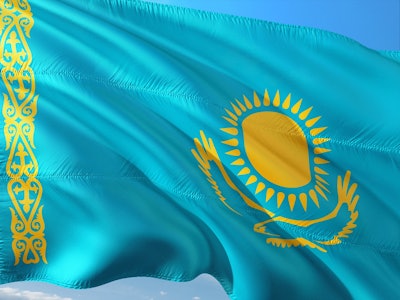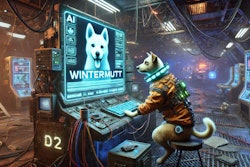
A local company in Kazakhstan is planning to build the first large-scale pet food factory in Central Asia in the coming years, signaling a big change in the region, where local businesses have been hesitant to invest in large production facilities.
KazPetFood has scheduled the start of construction for Central Asia's first large-capacity pet food factory in 2025. Zhanat Jandosova, KazPetFood development director, told Petfood Industry that the facility will be operational in the second half of 2026. At the initial stage, the factory is expected to manufacture 40,000 tonnes of dry pet food per year, running state-of-the-art European equipment and raw materials primarily of local origin, Jandosova said.
KazPetfood has experience in manufacturing pet food, though at a different scale. "Our company was one of the pioneers of the pet food industry in Kazakhstan," Jandosova said. "This is a small production, mainly focused on kennel dogs and specialized breeders."
She added that the company plans to sell pet food not only in Kazakhstan but also throughout Central Asia and beyond.
Pivotal time for Kazakhstan's pet food market
As of today, Kazakhstan's pet food market is primarily controlled by Mars Pet Care and Nestle Purina, which together account for 80% of sales. Several other brands, including Nature's Protection, Lider, Russia's Miratorg and Monge, have expanded their market share. The market also includes several local brands, such as Attila and Yummi, Jandosova said.
The new plant will be a game-changer for the region, which has historically relied on imported pet food.
Zooinform, a Moscow-based pet industry media, estimated the value of the Kazakhstan pet food market to be between $80 million and $100 million.
The past few years were pivotal for Kazakhstan's pet food market. Since 2022, the Kazakhstan market has been in turbulence, with problems coming up at market players "like an avalanche," Yulia Dolzhenkova, development director of Zooinform, told Petfood Industry.
"Products imported from Europe and China have become more expensive during the pandemic due to more complicated logistics, but things have become even worse after many manufacturers refused to transport their products by the shortest route -- through Russia," she said.
For example, Royal Canin pet food, which has always been imported from France, used to cross two borders to reach Kazakhstan. Now it has to cross four. As a result, its retail cost jumped by 60% to 80%, according to local pet business player.
KazPetfood decided to invest in its own pet food factory in 2023, Jandosova said. At that time, the market landscape was substantially altered.
Some premium food brands, which until recently enjoyed good demand and excellent prospects in Kazakhstan, have practically disappeared from retail as the price skyrocketed, with the exception of those stores that specialize in premium products. Yulia Dolzhenkova said the price increase is only part of the problem, with supply disruptions being the bigger concern.
KazPetFood is not the only Central Asian manufacturer developing its business, in response to the market turmoil. Yummi has recently established the export of pet food to Russia and Kirgizia. The company has started distributing its products through the leading Russian marketplaces Wildberries and Ozon. However, local players have relatively small production capacities.
Uzbekistan suffers from grey imports
The outlook for establishing pet food production in other Central Asian countries remains uncertain. For instance, Uzbekistan, the region's second-largest pet food market, continues to struggle with grey market imports, a problem that is also common in other parts of Central Asia.
"According to market players interviewed by Zooinform, the share of grey import accounts for at least half of the product range in most pet stores," said Yulia Dolzhenkova. "These are goods imported into the country without paying customs duties, without documents -- if they are needed, passing through the 'black' cash register and not burdened with taxes."
The main flow of grey supplies comes from China, she added. This trade flow is believed to undermine the local industry and hurt its investment attractiveness.
Pet food retail also lacks order. As Yulia Dolzhenkova explained, no one seems to know how many pet shops are running in Uzbekistan, not even large wholesalers. Basically, Uzbekistan lacks statistical information on the pet market, which everyone is accustomed to in more mature markets. There are signs, however, indicating sales in the market might be on an upward track, especially in the dog food segment.
"Now, there is a rapid increase in the number of pet shops in Tashkent and other cities," she added. "At the same time, the large ones do not push out the small ones. There is enough demand for everyone, despite the general price war."















